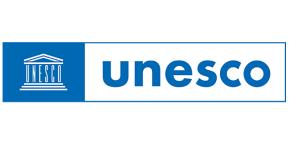
PhosAgro/ UNESCO/ IUPAC Partnership in Green Chemistry for Life

Research in green chemistry and associated areas in biochemistry, geochemistry, biotechnology, ecology and healthcare give young scientists ample opportunity to demonstrate their inventiveness and provide important input to sustainable development. With this in mind, the Green Chemistry for Life project was launched in 2013 by UNESCO’s International Basic Sciences Programme (IBSP) and PhosAgro, the largest producer of phosphate-based fertilizer in Europe, in close cooperation with the International Union of Pure and Applied Chemistry (IUPAC).
Objectives
PhosAgro/UNESCO/IUPAC research grants in green chemistry programme offers research grants of up to US$30,000 each to scientists aged 39 or under, for innovative research projects that respect the 12 principles of green chemistry, to assist them in implementing their work.
In addition to seeking to harness the talents of young scientists and the fruits of their research for the advancement of green chemistry. The programme sets out to raise awareness among decision- and policy-makers, industrialists and the public at large of the great opportunities green chemistry offers in contributing to address the multitude of pressing societal needs.
12 Principles of Green Chemistry
- Prevention of waste to avoid treating or cleaning up waste after it has been created;
- Atom economy through new synthetic methods designed to maximize the incorporation of all materials used in the process into the final product;
- Less hazardous chemical syntheses designed to use and generate substances that possess little or no toxicity to human health and the environment;
- Design of safer chemicals able to carry out the desired function while minimizing their toxicity;
- Avoiding wherever possible or minimizing the use of auxiliary substances (e.g. solvents, separation agents, and others), and introducing safer solvents and auxiliaries that are innocuous when they have to be used;
- Design for energy efficiency of chemical processes to minimize their environmental and economic impacts and if possible, to introduce synthetic methods to be conducted at ambient temperature and pressure;
- Promotion of the use of renewable raw materials or feedstock instead of depleting ones whenever technically and economically practicable;
- Reduce derivatives through minimizing or avoiding the use of blocking groups, protection/deprotection, and temporary modification of physical/chemical processes that require additional reagents and can generate waste;
- Catalytic reagents as selective as possible;
- Design for degradation of chemical products at the end of their function into innocuous degradation products not persisting in the environment;
- The development of analytical methodologies needed to allow real-time analysis for pollution prevention, in-process monitoring and control prior to the formation of hazardous substances; and
- Inherently safer chemistry for accident prevention substances and the form of a substance used in a chemical process to be chosen to minimize the potential for chemical accidents, including releases, explosions, and fires.
Source: "Green Chemistry: Theory and Practice," Paul T. Anastas and John C. Warner. New York: Oxford University Press, 1998.
Previous editions
Calls for applications
Green Chemistry research grants for young scientists
Young scientists are invited to submit their applications for PhosAgro/UNESCO/IUPAC research grants in green chemistry.
The 8th call for applications is open until 30 June 2023.
Green Chemistry special grants for research projects on phosphogypsum
A special call for applications is also open by PhosAgro, UNESCO and IUPAC in response to specific societal and environmental needs. This special grant will be awarded to a project in green chemistry, by a young scientist, with a PhD degree in chemistry or its allied areas, and have at least 3 (three) publications in recognized scientific journals. The project will focus on innovations in the processing and utilization of phosphogypsum, a mineral technogenic waste material produced in great quantities. The maximum age limit is 39. Young scientists are invited to submit their applications for PhosAgro/UNESCO/IUPAC grants for research projects on phosphogypsum.
The 6th call for applications (phosphogypsum projects) is open until 30 June 2023.
Before filling in these documents, please read the guidelines carefully.
The application documents are the same for both the grant in green chemistry and the grant concerning phosphogypsum.
They are available in a .zip file for download [after opening the link, please click on the "download" button at the top left of your window to download the .zip folder].
They include:
- Application form
- Project proposal form
- Approval letter
- Acceptance letter
International Scientific Jury
Chair
Professor John CORISH
School of Chemistry, Trinity College, University of Dublin, Ireland
Members of the Jury
Professor Berhanu ABEGAZ MOLLA
Former Chairperson of UNESCO International Basic Sciences Programme (IBSP), Former Executive Director, The African Academy of Sciences (AAS)
Professor Nguyen Van HUNG
Vice Rector, University of Sciences and Technology of Hanoi, Institute of Marine Biochemistry, Vietnam Academy of Science and Technology
Dr Boris LEVIN,
Deputy of CEO, PhosAgro
Professor Vladimir S. LITVINENKO
Rector, the Russian National Mineral Resources University (University of Mines), Saint-Petersburg
Professor Nicole J. MOREAU
Chairperson of the Scientific Board of UNESCO International Basic Sciences programme, Former President of IUPAC
Professor PATRIC MOYNA
Professor emeritus, Facultad de Quimica, Montevideo, Uruguay, former member of Committee on Chemistry for World Needs (CHEMRAWN) IUPAC
Dr Dogo SECK
Administrateur Général Centre Régional de Recherches, en Ecotoxicologie et Sécurité Environnementale (CERES-Locustox,) Cité Recherche Scientifique et Technique du Sénégal
Dr Alexander F. SHARABAIKO
Deputy General Director: Finance and International Projects, PhosAgro
Prof. Natalia P. TARASOVA
Former President, IUPAC, Mendeleyev University of Chemical Technology
Professor Pietro Rosario TUNDO
UNESCO Chair on Green Chemistry,Ca’ Foscari University of Venice
Professor VANIA ZUIN
Professor, the Federal University of São Carlos, visiting academic at the Green Chemistry Centre of Excellence (University of York, UK)
Professor Vladimir T. ZHAROV
Executive Secretary of the ISJ, PhosAgro/UNESCO expert (chemical sciences, international co-operation in the basic sciences)
Monitoring Bureau of the International Scientific Jury: Green Chemistry for Life
Professor John CORISH, Chairman of the Jury
School of Chemistry, Trinity College, University of Dublin
Dr Alexander F. SHARABAIKO
Deputy General Director: Finance and International Projects, PhosAgro
Professor CHRISTOPHER BRETT
Past president of IUPAC, Department of Chemistry University of Coimbra, Portugal
Dr Amal KASRY
Chief, Section of Basic Sciences, Research Innovation and Engineering, UNESCO
Professor Vladimir T. ZHAROV, Executive Secretary of the Jury
PhosAgro/UNESCO expert (chemical sciences, international co-operation in the basic sciences)
Executive agency

Contact
UNESCO
Green Chemistry for Life, Natural Sciences Sector
7, Place de Fontenoy
75352 Paris Cedex 07
France
Tel (+33-1) 45.68.08.38
E-mail: green.chemistry@unesco.org



